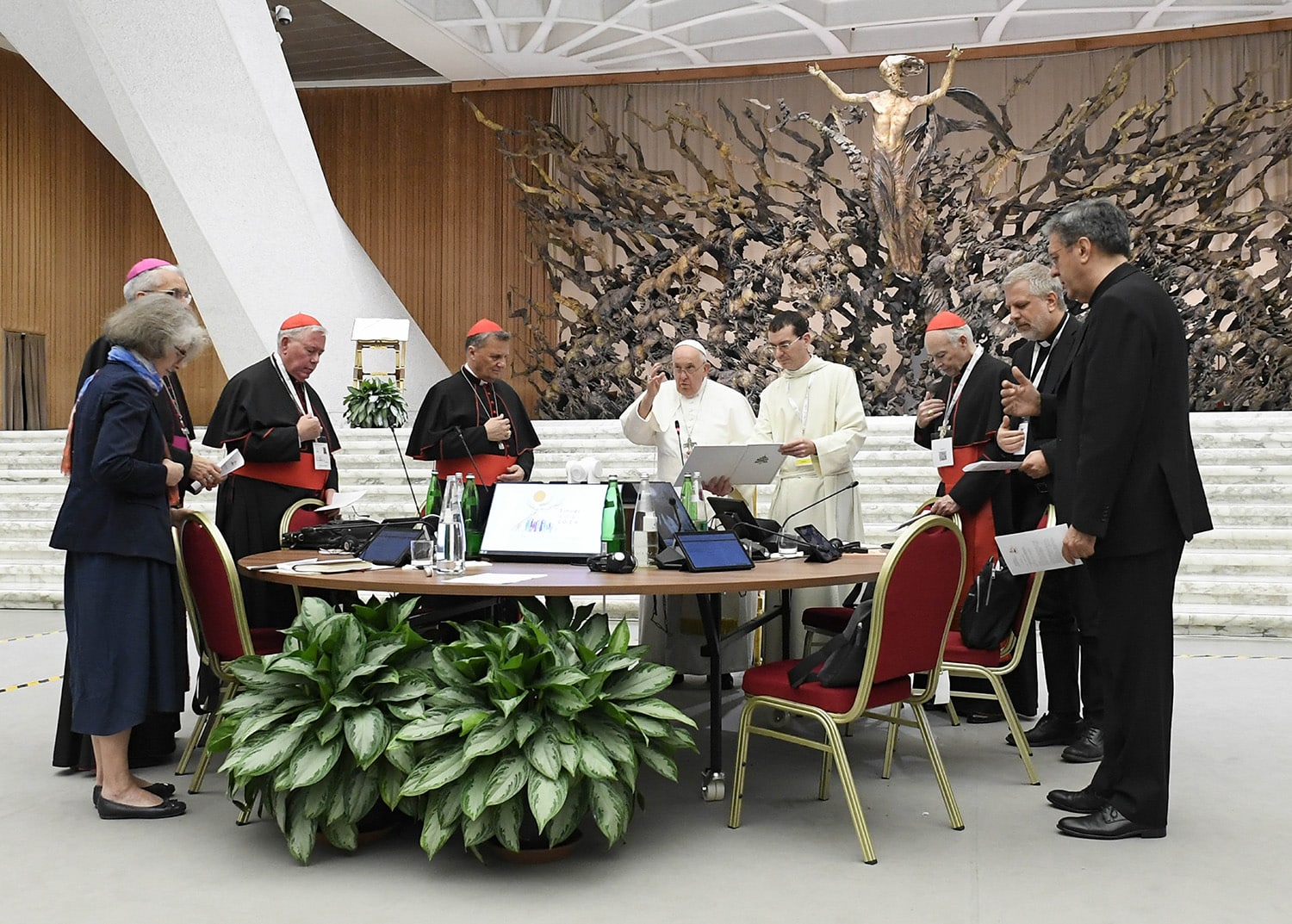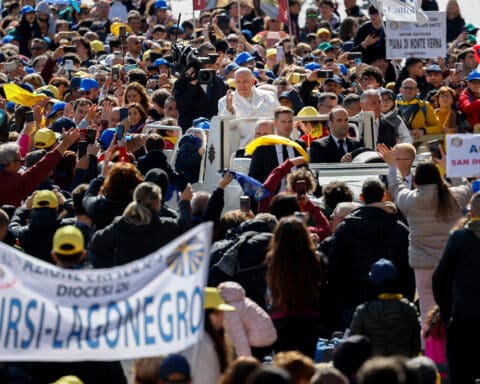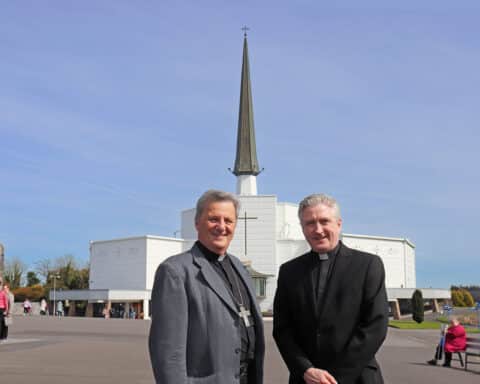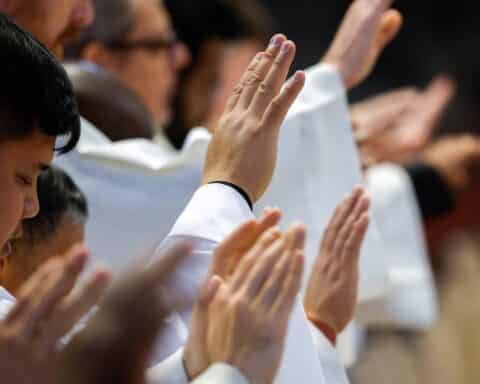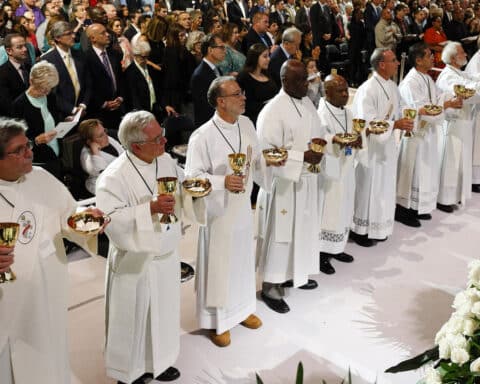The year is 431. The Council of Ephesus, a gathering of bishops representing all of Christendom, is convened in order to reach a consensus on Church teaching, including a heated debate on whether the Virgin Mary should be designated Theotokos, “God-bearer,” or “Mother of God,” or Christokos, “Christ-bearer.”
The disagreements were split between two camps: Nestorius, Patriarch of Constantinople, who argued that Mary should be called Christokos, and Cyril, Patriarch of Alexandria, who advocated for the “Mother of God” title.
Debates, accusations of heresy hurled left and right, threats of excommunications, and, ultimately, schism led to a highly contentious assembly.
Fast-forward to October 2023. The end of the first session of the XVI Ordinary General Assembly of the Synod of Bishops has arrived. Addressing the members of the synod, Pope Francis evoked the image of the fifth-century council, not because of its similarities with the often contentious debates that arose since the synod’s theme — “For a Synodal Church: Communion, Participation, Mission” — was first announced in 2020, but for what he described as the “infallibility” of the people of God during that time.
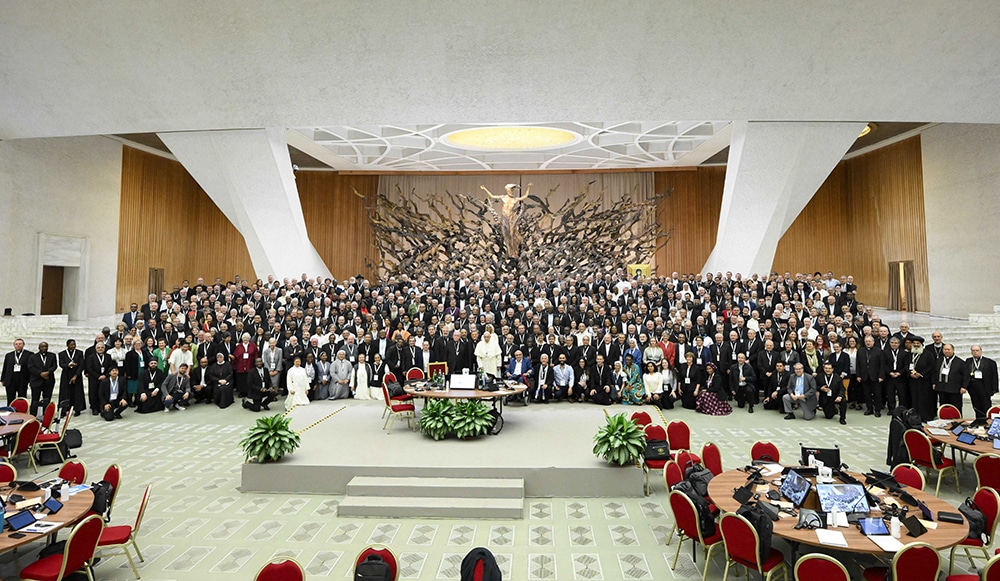
“History (or legend) says that the people were on both sides of the path leading toward the cathedral while the bishops processed to the entrance, and that crowd repeatedly said, ‘Mother of God,’ asking the hierarchy to declare a dogma that truth they already possessed as people of God,” the pope said on Oct. 25.
“Some say,” he noted, “that they had sticks in their hands and showed the bishops. I don’t know if it is history or legend, but the image is valid.”
The pope’s call for the laity to essentially, “Speak loudly and carry a big stick,” was quite a departure from past synods, where conclusions on themes, such as the Eucharist, the priesthood or evangelization, were pretty much signed, sealed and delivered, sometimes even before the meetings were over.
For all its positives and negatives, the Synod of Bishops highlighted a new approach by the Catholic Church to allow the voice of the people of God, especially those in the periphery of the Church and society, to be heard at the Vatican.
Nevertheless, after nearly a month of reflection, group discussions and addresses behind closed doors at the Paul VI audience hall, were the voices of those in the periphery heard?
A missionary in the ‘digital Galilee’
Among the sea of synod members — clergy, religious and lay — one member stood out from the crowd, dressed in a gray jacket, white T-shirt and a baseball cap emblazoned with the letters JDN, the initials of the Catholic media network he founded, the Juan Diego Network.
Jose Manuel de Urquidi, who hails from Monterey, Mexico, but lives in Dallas, Texas, evangelizes in the often wild and rugged landscape of the digital realm, inhabited by countless people, especially young men and women.
“It is true that there is a gap between the culture of the institutional Church and young people formed by the digital age,” Urquidi said in his Oct. 13 address to the synod.
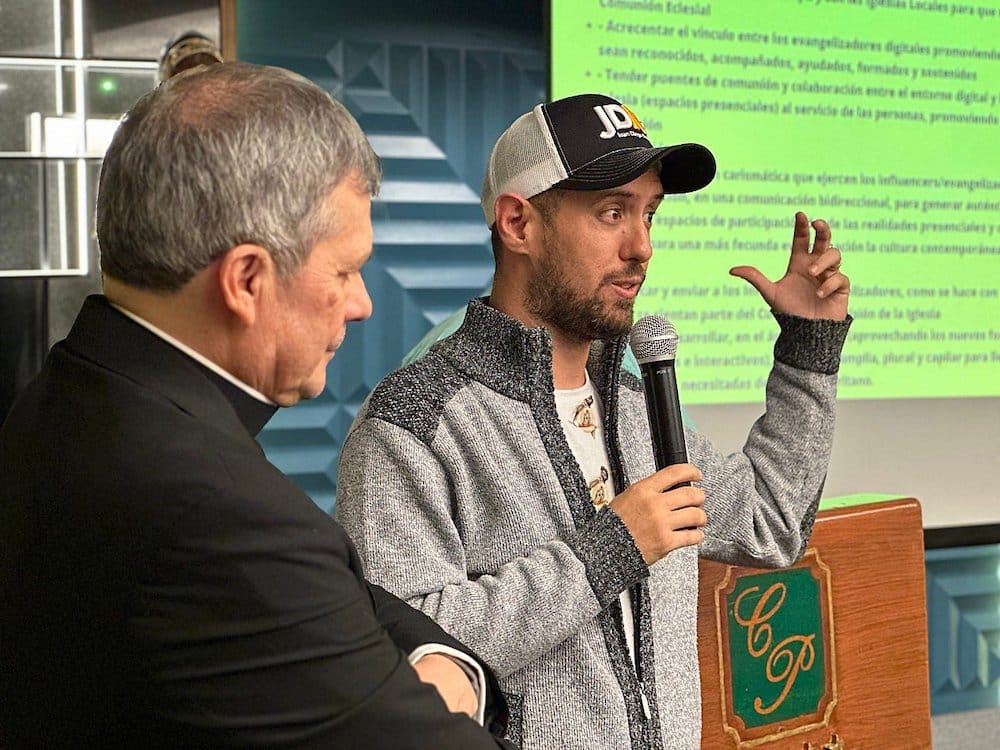
“It is said that we are in a moment of transformation in the Church, that the inherited model no longer works for speaking to the digital age. It is suggested that, in this transitional era, the Church should be built from the peripheries, there in the Galilee of non-believers and the wounded, where those yearning for God do not know how to call upon Him.”
“A month is a lot,” he said. “So when people say more participation of the laity and stuff, I don’t know if they thought it through!”
Donning a different, yet always sporty, baseball hat, Urquidi spoke with Our Sunday Visitor Oct. 22 and reflected on the nearly one-month-long assembly as a lay voting member.
“I know that might sound weird for someone,” he said. “It’s not like clicking a button and ‘yes’ or ‘no’ to approve something. It’s just this weird opportunity of being one month with cardinals, archbishops, patriarchs, having breakfast, lunch, and dinner.”
However, with a hint of sadness, Urquidi notes that he also sacrificed quite a bit to be there: while in Rome, he missed the death and funeral of his grandfather, as well as his eldest daughter’s birthday.
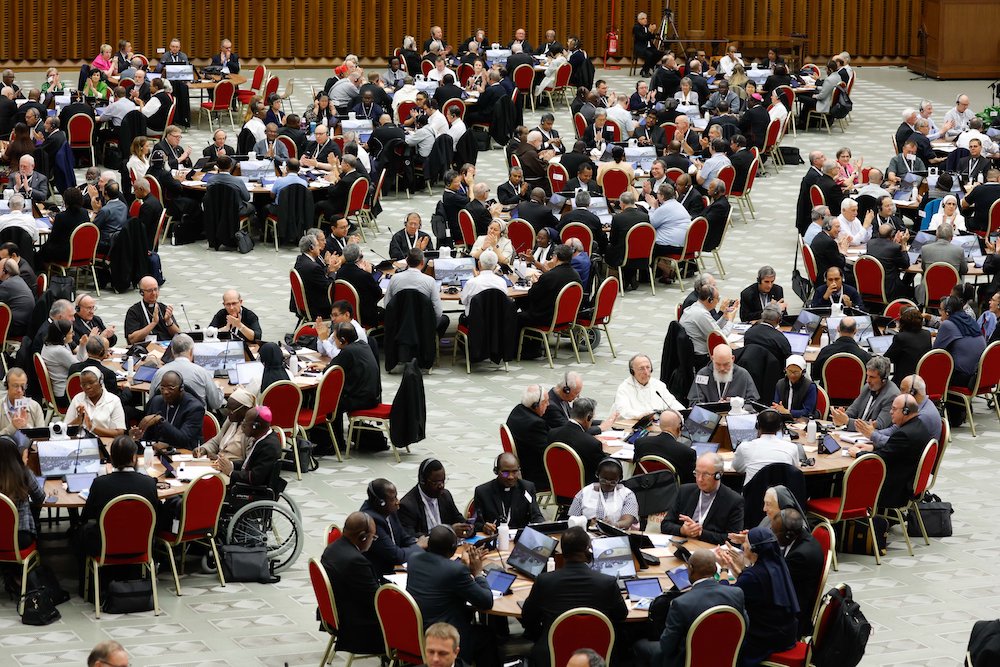
More than just hot-button issues
Asked about what kind of issues have been mulled over during the small group discussions, Urquidi told Our Sunday Visitor that while it may be easy to think that the members are hammering away at ways to renew the Church, the reality of the universal Church in different social and cultural contexts is more complex than tackling specific, hot-button issues.
“It’s very easy to — at least in the U.S., (to view things in terms of) far-right and right; right and left; conservative and liberal,” he explained. Here “you’re at a table working, praying with bishops that are from Africa, from Asia, from Oceania, from Europe, from different realities of the Church.”
“They’re not thinking about these extremely hot-button topics for the media. Most of them are seeing their people suffer, or they have a ‘springtime’ in vocations yet don’t have the resources to support them,” he added.
Another challenge Urquidi noted was that an issue, or rather, a word used to describe a particular issue in one country, could mean something entirely different in another.
“I remembered my first round table. A cardinal from India said the word ‘diversity,'” he recalled, adding that during a follow-up discussion, the cardinal had to clarify that in the context of his country, the diversity he called for was in reference to India’s caste system.
“And other people from different parts of the world understood diversity as maybe on LGBTQ issues or another with migrants, etc.,” he said. “The issue is that the Church has become enculturated in a specific place and the realities are different. That’s the richness! That’s the big issue, right? The Church being universal in all its senses.”
Tying to share Christ
Preferring the term “digital missionary” rather than “Catholic influencer,” Urquidi said people in the digital world are no different from those in the real world. “What people in the digital world are expecting is really normal stuff: They want a church that’s really on a mission, that’s really like Jesus, that’s really close to them.”
Urquidi told Our Sunday Visitor about his network’s involvement with “The Church listens to you” project, which aims to bring the synodal process to digital environments.
The project boasts some 2,000 digital missionaries around the world who use media platforms, such as TikTok, Instagram, YouTube and podcasts, to evangelize. “They’re trying to get Christ and his word in different ways to the internet, to their followers and, in the end, to attract them to Christ, to the sacraments, to His Church.”
“We’ve never had uniformity in 2,000 years! We’ve always been fighting with each other. And you can see that in the Acts, in all the councils, but still there’s communion and we’re united in the mission.”
Urquidi said he hoped that both practicing and non-practicing Catholics would get a clearer picture of the scope of the synod once they read the final report from the October assembly, which was released on Oct. 28, and discuss its contents until the next synod in 2024.
“These next 11 months will be a lot of, let’s say, an experimentation of things,” he said. “Nothing theological, doctrinal or changing dogmas, doctrines or disciplines. That’s not the point of this. The point of this is to learn how to be a church, a missionary church, being able to talk with each other despite our differences. And still being in communion because sometimes people hear communion and think uniformity. That’s not the case.
“We’ve never had uniformity in 2,000 years! We’ve always been fighting with each other. And you can see that in the Acts, in all the councils, but still there’s communion and we’re united in the mission,” he added. “People can be involved and be part of the new things in the Church that are not that new but that are being built upon from 2,000 years of tradition that are in line with the Magisterium.”
‘O Sister, Where Art Thou?’
A novelty of this year’s synod was the inclusion for the first time of women, both religious and lay, as voting members.
When the change was announced in April, Cardinal Jean-Claude Hollerich of Luxembourg, relator general of the synod, said that while the inclusion of women as voting members was “an important change, it’s not a revolution.”
Yet few could deny the significance of such a change: while the term “feminine genius” had been proclaimed often by the Church since the days of Pope St. John Paul II, for many Catholic women, the phrase was more of a platitude rather than a consideration or an appreciation of their insight in the life of the Church.
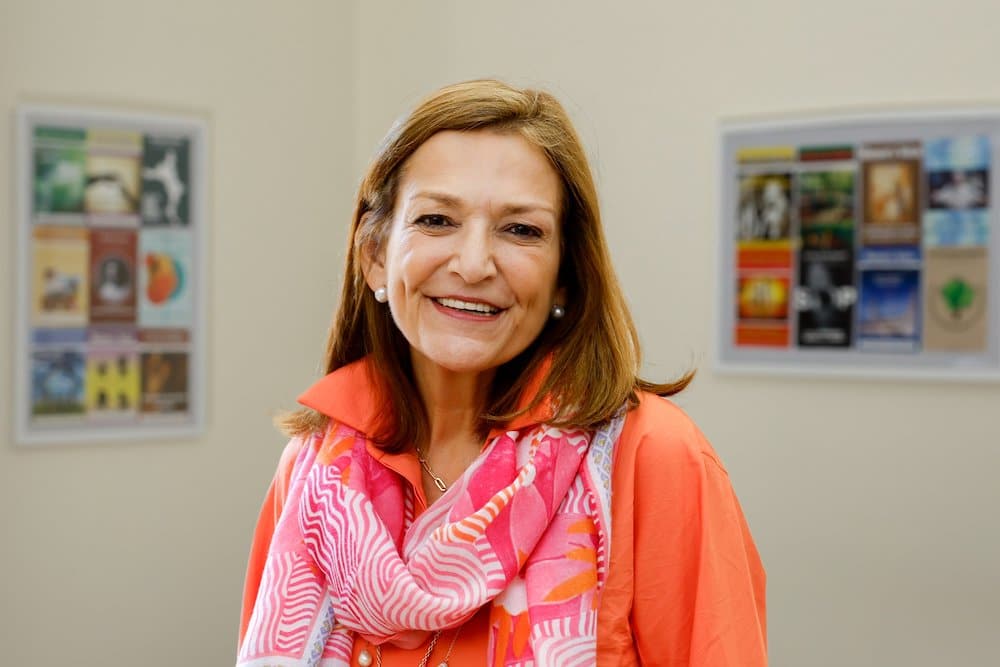
“The Church needs to give women more visibility and needs to listen more to women. That is for sure,” said Monica Santamarina, president of the World Union of Catholic Women’s Organizations (WUCWO).
Throughout the synod, attention has been focused on the greater role women should play in the Church. Although she was not among the synod members, Santamarina and the WUCWO worldwide took part in the continental phase of the synod, as well as led events focused on the issues women hoped would be addressed at the assembly.
Nevertheless, Santamarina told Our Sunday Visitor on Oct. 25 that among the main issues that are concerning to Catholic women all over the world is the “need to overcome clericalism,” a sentiment echoed in the synod’s final report.
“Clericalism, machismo and inappropriate use of authority continue to scar the face of the Church and damage communion,” stated the report, which was published on Oct. 28. “Deep spiritual conversion is needed as the basis for any structural change. Sexual abuse, as well as abuse of power and financial abuse, continue to require justice, healing and reconciliation.”
Santamarina said clericalism is much stronger in certain parts of the world, such as Latin America, Africa and Asia. However, in Europe, problems are different and in the United States, “they are afraid that clericalism will come back.”
While problems vary in different regions, she added, one undeniable necessity women in the Church are calling for is simply to be heard.
Women “want to be taken into account because they count for half of the population of the world. They are the ones that are all day long working in the churches, in the parishes, with the people, with the catechism,” she said.
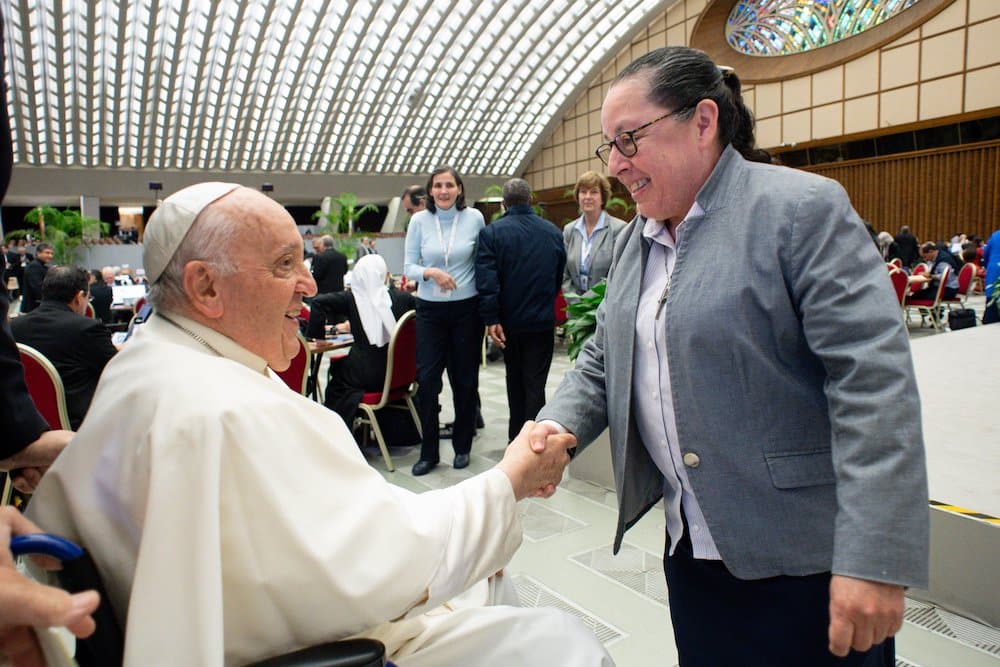
Being close to the people
Santamarina said that most Catholic women are closest to the people and feel they should be involved in the Church’s decision-making process, which affects everyone.
“Most women don’t want to be there instead of the priest or instead of the bishop. No; they want to be together with all the rest of the people of God,” she said.
The head of the WUCWO told Our Sunday Visitor that while there is much more to be done, Pope Francis has taken some very “big steps” in his pontificate, especially by appointing women in various dicasteries.
While Santamarina acknowledged that many Catholic women in the United States and Latin America are advocating for the admittance of women into the diaconate, especially since many “are already performing things that ordained deacons do,” she also said it was a matter that needs to be discussed, a sentiment echoed in the synod’s final report.
“Most women don’t want to be there instead of the priest or instead of the bishop. No; they want to be together with all the rest of the people of God.”
“We are not saying yes or no, we are just saying that it needs to be studied,” Santamarina said. But “we need the Church to know that we can do a lot of things, that they let us do, that we are very valuable and we ourselves need to be convinced of that too, and we need to be formed for it.”
Although many are hoping that monumental changes are possible, Santamarina said she tells people that this process is going to be slow and urges them to be patient.
“The Church is a very big structure, so it cannot work as fast as we would want it to, but we know the needs are great. So the Church has to change,” she said.
Santamarina said she dreams of a church where “women would be much more taken into account.”
“It’s not about competing with men. It’s that we can work together, hand by hand, all the people of God. And we have a very important mission. So, I dream that everyone gives us the opportunity to fulfill this mission and to show what we can do and how we can help, which is a lot,” she said.
Imposed ‘fast,’ media headaches ensue
In his opening address on Oct. 4, Pope Francis made an appeal to synod members and to journalists covering the Synod of Bishops.
Emphasizing the need to listen, the pope called for “a certain fasting from public speech,” and while not outright calling for a media blackout, he asked members not to divulge too much of what was being discussed.
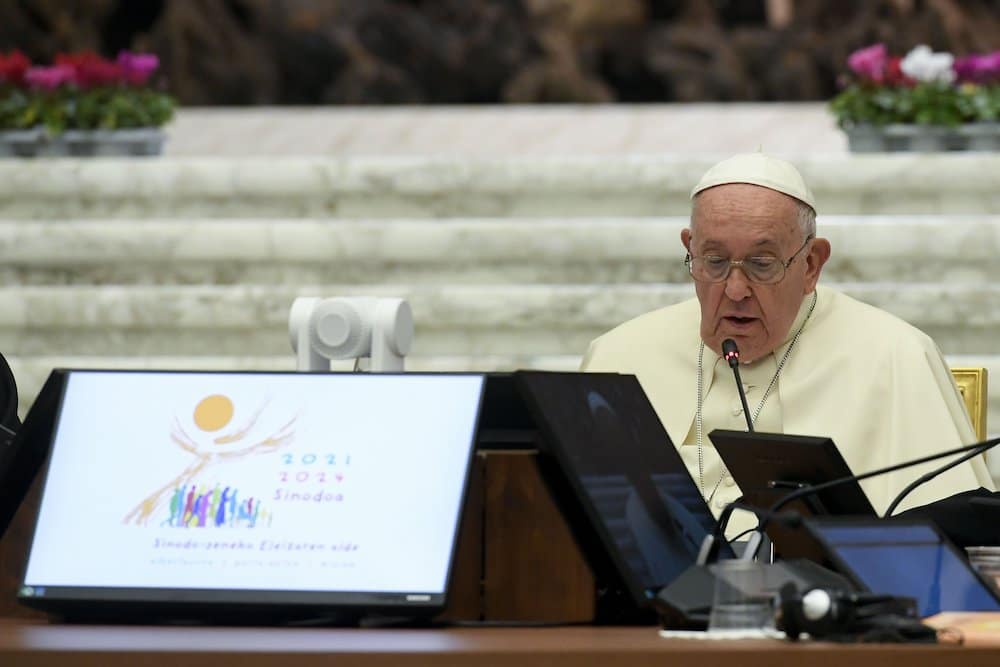
“Some will say — and are saying — that the bishops are afraid and that is why they don’t want the journalists talking,” he said. “No; the work of journalists is very important. But we have to help them so that they can also speak of this journeying in the Spirit. More than speaking, the priority is that of listening. I ask journalists to please make this known to people, that they realize that the priority is to listen.”
Yet for journalists, and even some participants of the synod, such a “fast,” as the pope described it, prevented Catholics and the world from knowing if issues raised in the synod’s initial phases were taken seriously and even opened the door to speculations and fabrications.
Furthermore, the synod’s theme of listening and discerning seemed at odds with Catholics, both within the Church and the periphery, who were unable to do either with the limited information available.
Nevertheless, an imposed “fast” gave some the impression that while the Church was listening to the voices of those in the periphery, the media had been relegated to the Vatican’s own periphery of silence.
Frustrations on both sides — the Vatican’s communications office, which emphasized the need to allow the synod discussions to proceed in an atmosphere of openness, and journalists, who felt hindered in doing their duty to inform the public — inevitably bubbled to the surface.
A heated press briefing
During an Oct. 17 press briefing, Paolo Ruffini, prefect of the Vatican’s Dicastery for Communications, had a testy exchange with a journalist who took issue with the prefect’s statement that the synod discussions were part of the process of “discernment that is not in response to a question that is posed by one journalist or another.”
Issues such as the status of women in the Church, or the Church’s approach toward LGBTQ people weren’t “just journalistic inventions, those are issues that were raised repeatedly at the local, diocesan, national and continental levels,” the journalist said.
“To write it off as a journalistic question, I think is not very nice,” she said, prompting applause from other journalists at the briefing.
The remark elicited a defensive response from Ruffini who said that “we are in the middle of a path and that the synod, this assembly, will conclude with a synthesis document that will then be sent back to the people of God, and then there will be another synod.”
He also assured that the issues raised in the synod’s Instrumentum Laboris, or working document, were being discussed.
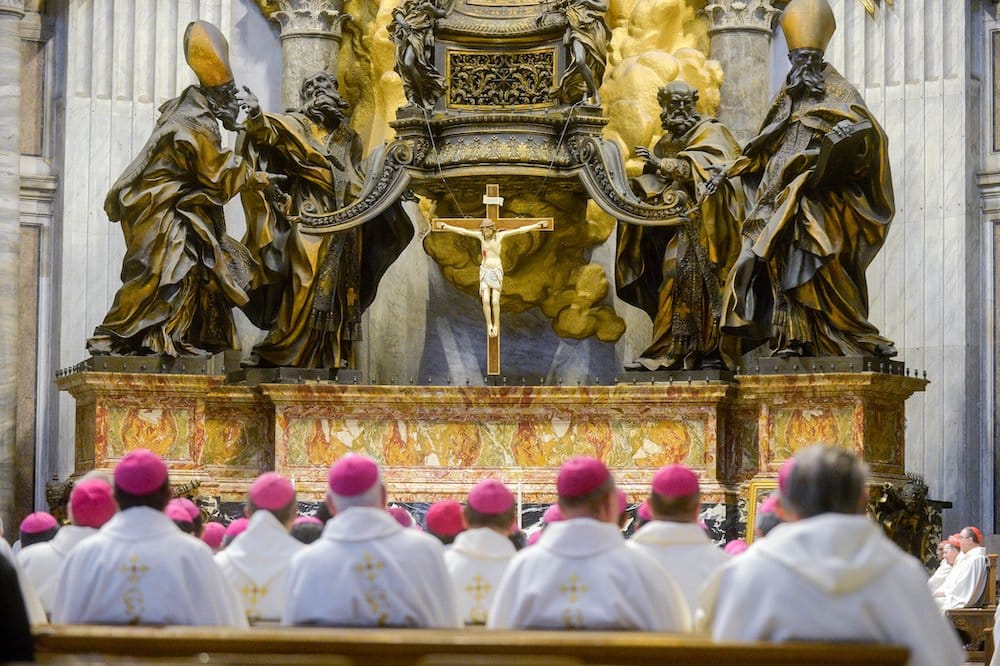
Blackout did no favors
For John L. Allen Jr., a seasoned Vaticanist and editor of the independent Catholic news site Crux, the apparent media blackout did no one, especially the Vatican, any favors.
“This is the 15th synod I’ve covered, and it’s always been challenging because journalists have never been allowed into the hall during actual discussions,” Allen told Our Sunday Visitor on Oct. 24.
“On the other hand, in the past, we got texts of the speeches that participants gave, along with written summaries of the small group discussions, and participants were free to talk to the media outside the synod hall,” he said.
This time around, Allen noted, journalists had been reduced “to whatever hand-picked participants say during official Vatican briefings.”
“I’ve never had very high expectations of Vatican communications, but even by those low standards, this has been fairly disappointing,” he said.
As a synod voting member, Urquidi acknowledged the lack of information about the discussions, which he said had led pundits abroad to debate or make inaccurate reports about the meeting while “journalists here have no idea what’s happening inside.”
“That’s the reality of the internet: fake news or people who think something about the synod,” Urquidi told Our Sunday Visitor. “And with this confidentiality that we have and they not being inside the hall, I guess it’s easy to think that way and to continue along that line.”
Nevertheless, he was hopeful that once information was made available after the conclusion of the October meeting, “we’ll be able to talk a bit more and they can see the truth of what was happening.”
“All I can say is that, for better or worse, it’s ironic that for a papacy which has made transparency a watchword of reform, this is by some measure the least transparent synod I’ve ever covered.”
However, he also said the reactions, debates, and news — fake or not — has had little impact on the discussions going on in the synod hall. With a full agenda, Urquidi said he and his fellow participants had little time to talk about outside news and, instead, were “really trying to get to know each other and follow the methodology of the spiritual conversation.”
“It proved to be really cool to be able to talk. We’re able to really express ourselves and maybe speak about the reality of where we come from and speak openly about things,” he said.
Urquidi’s assessment echoed a similar observation made by Allen who said that some within the synod hall felt that “by avoiding airing contentious matters in the media, space has been cleared for the synod to have more honest and frank conversations, thereby promoting a spirit of openness.”
However, Allen told Our Sunday Visitor that others felt that the media blackout had “given license to speculation and conspiracy theories about what’s really going on, thereby handing ammunition to critics of the process.”
“All I can say is that, for better or worse, it’s ironic that for a papacy which has made transparency a watchword of reform, this is by some measure the least transparent synod I’ve ever covered,” Allen said.
| Letter to the People of God |
|---|
| “Day by day, we felt the pressing call to pastoral and missionary conversion. For the Church’s vocation is to proclaim the Gospel not by focusing on itself, but by placing itself at the service of the infinite love with which God loved the world (cf. John 3:16). When homeless people near St. Peter’s Square were asked about their expectations regarding the Church on the occasion of this synod, they replied: ‘Love!’. This love must always remain the ardent heart of the Church, a Trinitarian and Eucharistic love, as the Pope recalled on October 15, midway through our assembly, invoking the message of Saint Thérèse of the Child Jesus. It is ‘trust’ that gives us the audacity and inner freedom that we experienced, not hesitating to freely and humbly express our convergences, differences, desires and questions.” — From the Letter of the XVI Ordinary General Assembly of the Synod of Bishops to the People of God |
The road goes ever on
The publication of the synod’s final report caused a variety of reactions: some were disappointed that no real action was taken in regard to LGBTQ Catholics or women deacons. Others seemed relieved that no major changes were made.
The report showed that those reactions were in the minds of the synod’s members too.
Regarding the admittance of women to the diaconate, the report said that while there were those who voiced support or opposition, there were some who “expressed fear that this request is an expression of a dangerous anthropological confusion, that by embracing it, the Church would align itself with the spirit of the times.”
Nevertheless, this is only the first step in a longer process that will continue throughout the year and culminate with the Synod of Bishops in 2024.
| Pope’s Final Comments |
|---|
| “To love is to adore. Adoration is the first response we can offer to God’s gratuitous and astonishing love. The amazement of adoration, the wonder of worship, is something essential in the life of the Church, especially in our own day in which we have abandoned the practice of adoration. To adore God means to acknowledge in faith that he alone is Lord and that our individual lives, the Church’s pilgrim way and the ultimate outcome of history all depend on the tenderness of his love. He gives meaning to our lives.” — From the homily of Pope Francis at the conclusion of the Ordinary General Assembly of the Synod of Bishops |
While both Urquidi and Santamarina expressed hope that fruits will bear in the long and arduous road toward a synodal Church, Allen emphasized that it is only those fruits that will determine whether the Synod of Bishops on synodality was a success or failure.
“If the impression is that it generated significant reforms that help the Church meet an increasingly challenging future, no one will really care about frustrations with the process,” Allen told Our Sunday Visitor.
“In other words, it’s all about results — despite the protestations of some participants, by the way, that the point of this exercise isn’t actually to produce concrete outcomes,” he said.

